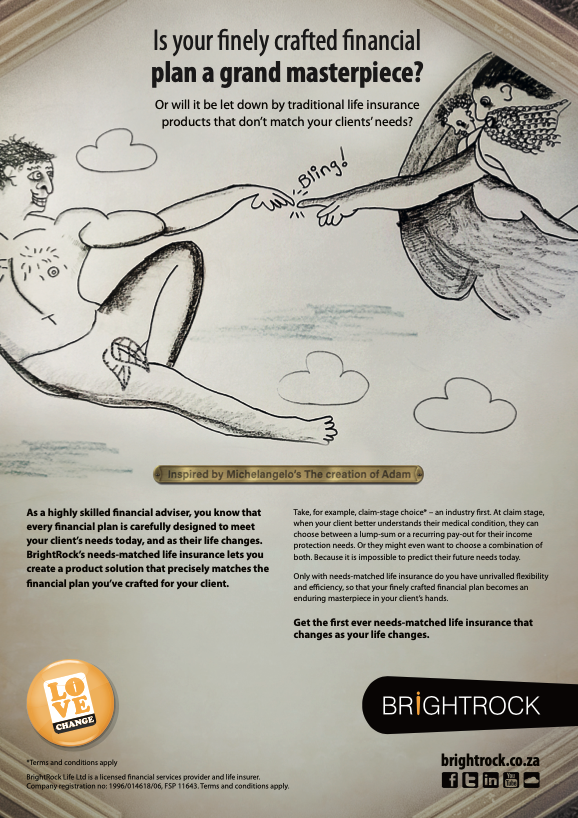By: Suzanne Stevens, Deputy CEO at BrightRock
It is difficult to form a coherent picture of how well the financial services industry is performing when it comes to meeting women’s needs. Despite the well-documented global gender pay gap and higher levels of unemployment under women (StatsSAi puts the expanded unemployment rate for women at 7.1% higher than men, while SA ranked 111th out of 146 countries for pay parityii), research suggests that women are the financial decisionmakers in the majority of South African householdsiii. Yet, women remain under-served by the financial industry, with a larger gap in coverage for women both in terms of their post-retirement savings, and their long-term insurance needs compared to their male counterparts.
When comparing the difference in women’s retirement income to that of men, the pension gap between the sexes is estimated to be around 26%. The latest ASISA insurance gap studyiv found that women are less adequately covered than men for both death and disability events – women’s death cover meets only about 40% of their insurance need, while their disability cover meets only around 45% of their requirement.
Financial advisers can play a key role in helping to close these gaps, and we are encouraged to see more women entering the financial planning profession. According to the FPI, the number of female financial planners active in the industry is steadily increasing – in 2017, more than 31% of its certified members were womenv. Whether male or female, financial planners need to consider women’s financial needs at every life stage to ensure their financial plan caters for their changing needs.
At younger ages, both men and women need to ensure they have enough disability cover. The most important thing women need to protect at this stage is their ability to earn an income; they still have a lifetime of pay cheques ahead of them, which they need to safeguard. While young women may not be as likely to suffer from a critical illness like cancer, they could still be in an accident, for example, which may impact their future earning potential.

Is your finely crafted financial plan a grand masterpiece?
Or will it be let down by traditional life insurance products that don’t match your clients’ needs?
As a highly skilled financial adviser, you know that every financial plan is carefully designed to meet your client’s needs today, and as their life changes. BrightRock’s needs-matched life insurance lets you create a product solution that precisely matches the financial plan you’ve crafted for your client.
BrightRock Life Ltd is a licensed financial services provider and life insurer. Company registration no: 1996/014618/06, FSP 11643. Terms and conditions apply
For working women with families, in addition to ensuring they have disability cover, they also need to prioritise death cover. When women have financial dependants, they need to make provision for those they leave behind should they pass away. Critical illness cover is key here too, as the likelihood of diseases increases with age, and unexpected costs may arise.
Stay-at-home mothers may not think that they need life cover, because they don’t earn an income. However, something that is often overlooked is the importance of temporary disability insurance. Should a stay-at-home mom become ill or injured and be unable to look after her children for a while, it could result in additional expenses for the family, such as the cost of day care or a transport service. Temporary disability cover would help to bridge this gap. As in the case with working moms, cover for critical illness is also key.
It’s vital that single mothers have comprehensive life insurance, to cover their family for all eventualities. Death, disability and severe illness are all critical.
For working women in their 30s and 40s with no children, their focus should be on disability and critical illness. While they may think that, because they don’t have any dependants, they don’t really need life insurance, these women still have to protect their ability to earn an income.
The general assumption around age and life insurance is that the older you get, the more disability and death cover you need. However, the opposite is true. Usually, as people get older, their financial liabilities tend to decrease. You need less disability cover as you have fewer pay cheques left to protect. What should go up for women in this life stage, though, is critical illness cover. Good health becomes far less of a certainty and cancers, heart problems and other diseases become more common.
Once women reach retirement age and start living from their retirement savings, they no longer need disability cover, as they are no longer earning an income. Critical illness insurance continues to remain a high priority in the golden years, as declining health becomes more likely. Death cover is only relevant here for funeral costs and paying off any existing debt. The ability to convert death and disability cover at these older ages in order to top-up critical illness cover without medical tests also becomes more important at this stage of women’s lives.
From the above it should be evident that, just like men, women’s life insurance needs will keep changing throughout their lives. It is in their best interests, then, to have cover that changes with them, so that they derive the maximum benefit out of what they are paying for their life insurance. Financial advisers have a critical role to play in helping women access to needs-matched cover that caters for their unique circumstances and changes with them.
Sources
i StatsSA: https://www.statssa.gov.za/publications/P0211/P02111stQuarter2023.pdf
ii WEF Gender Gap report, as quoted in News24: https://www.news24.com/fin24/opinion/analysis-behind-sas-glorious-gender-gap-rank-women-earn-up-to-35-less-than-men-for-the-same-job-20230630
iii Nielsen, as quoted in News 24: https://www.news24.com/news24/women-wield-the-bulk-of-sa-spending-power-20191120
iv ASISA, 2022 Life and Disability Insurance Gap Study: https://www.asisa.org.za/resources/research/
v FPI, 2017: https://www.linkedin.com/pulse/female-cfp-professionals-south-africa-now-above-30-fpi-smit-cfp-/

